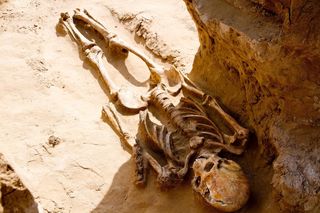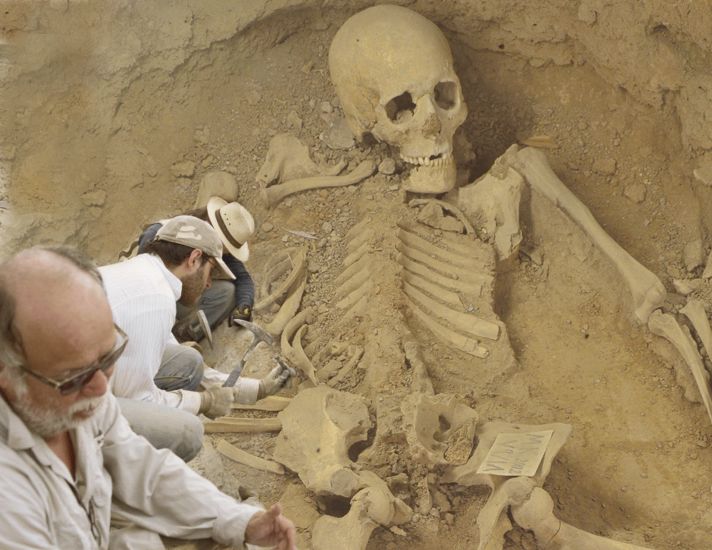The bones of three top members of a nomadic tribe from 2,500 years ago have been discovered by a farmer in Russia. One of the people was discovered buried next to a horse’s skull and harness.
Three 2,500-year-old burials of elite members of a group known as the Sarmatians have been discovered within a kurgan (a large mound) in a village called Nikolskoye located northwest of the Caspian Sea in Russia.

The three skeletons were found among the kurgan’s wooden coffin remnants. [See Images of the Skeletons and Burials from the Nomadic Tribe]
Despite the kurgan having been looted in the past, according to two Russian-language announcements made by the Astrakhan regional administration, several artifacts, including weapons, gold jewelry, and domestic objects (including a bronze kettle), were found next to the coffins.

The three burials were buried at a period of great prosperity for the local Sarmatians. This nomadic tribe thrived in southern Russia before spreading into eastern and central Europe and engaging in conflict with other ancient peoples including the Scythians, Romans, and Goths.
Rustam Mudayev discovered the kurgan after spotting a bronze kettle while working on a farm. After Mudayev alerted the authorities about his discovery, an excavation was carried out by a team under the direction of Georgiy Stukalov, an archaeologist at the Astrakhan State Museum.

The kurgan is still being excavated, and the remains are still being examined. The cause of death, as well as the victims’ gender and age, are still unknown.
Over the past century, kurgans have proliferated all throughout Russia and its neighbors; they frequently house the graves of prominent members of ancient tribes.

According to the remarks, the recently discovered kurgan’s archaeological artifacts are being transported to the Astrakhan State Museum.

